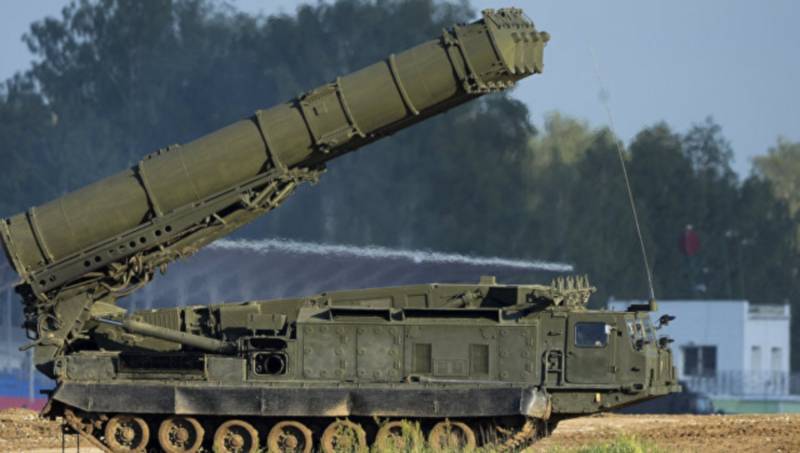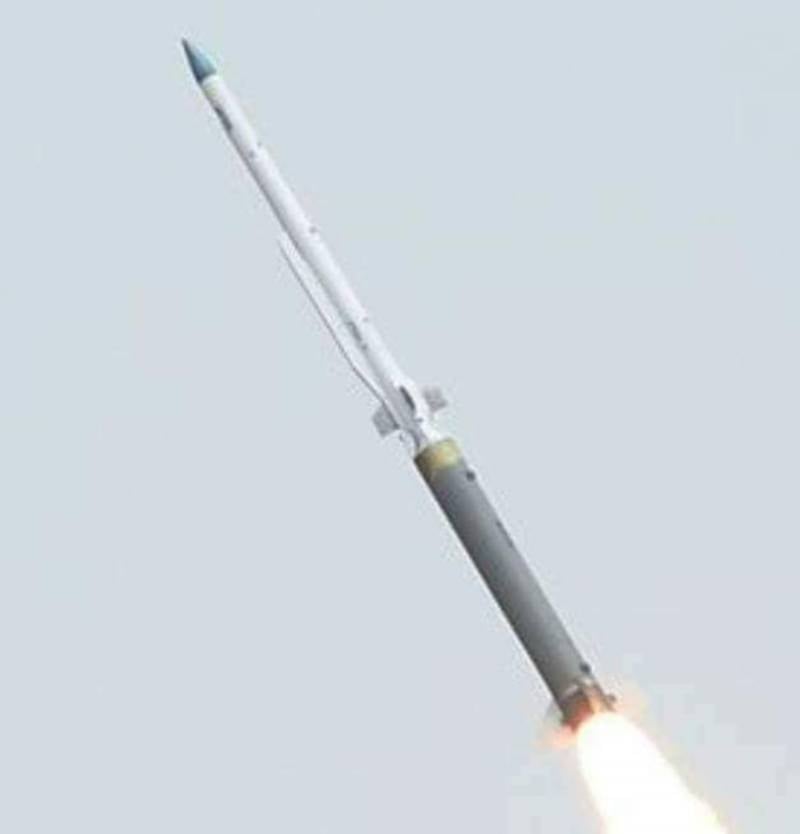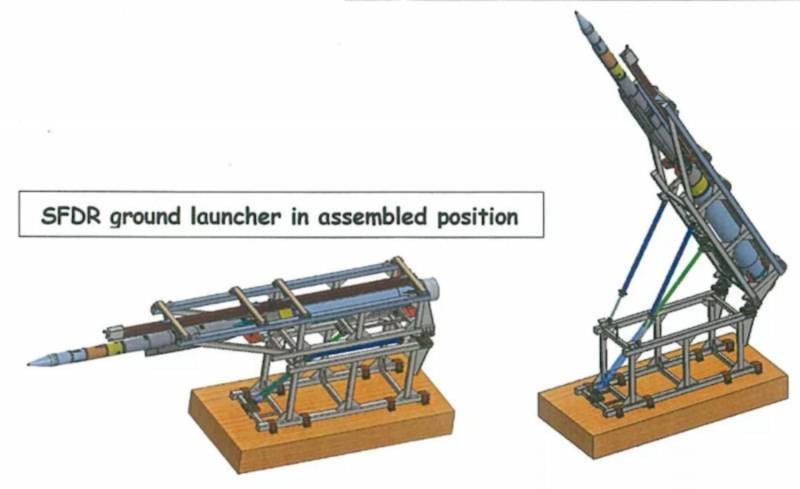C-300 and C-400 may face a formidable competitor: the “straight-through” XR-SAM interceptor
For almost two decades now, we have been observing a persistent trend of dominance in the air defense segment of the world arms market of the national S-300PS, S-300PMU-2 Favorit, S-300VM Antey-2500 and S-400 "anti-aircraft missile systems" Triumph ”, as well as the American Patriot PAC-2 and Patriot PAC-3 systems. This is not surprising, because simultaneously with the range of interception of aerodynamic targets (tactical and strategic aviation) in 90-250 km, all of the above systems are also capable of processing operational-tactical ballistic missiles of the enemy, as well as high-speed elements of high-precision weapons (AGM-88E AARGM and X-58USHK anti-radar missiles) at a distance from 5 to 60 km.
In the eyes of numerous foreign customers, such anti-missile qualities are becoming increasingly fundamental against the background of events taking place in the Golan Heights and the “western wing” of the southern “de-escalation triangle” in Syria (the cities of Tasil, Nava, Qasim and Kuneitra). These territories, currently under the control of the oppositional terrorist militant group Free Syrian Army and a small ISIL bridgehead (prohibited in the Russian Federation), are used by Tel Aviv as an 25-kilometer buffer zone to maintain the distance between the fortifications of the Israel Defense Forces in the Golan and units of the Syrian Arab Army and Hezbollah in the area of Inhila and Kafr Shams. At the same time, the IDF literally regularly launches rocket-air strikes against the Siberian navy brigades near the contact line. Of course, a good half of the tactical missiles and rockets launched by the Israeli military are successfully intercepted by the C1 and Beacons-M2E, which, for obvious reasons, increases the attractiveness of the more serious C-300PMU-2 system and the more advanced C-XNUMV military version "Antey-300".
Yes, a more perfect system S-400 «Triumph" has a new radar target illumination 92N6E, but to talk about superdostoinstvah its export version is still very early, since we still have not seen in its arsenal of surface-to-air missile 9M96DM / E2 equipped with unit pulsed gasdynamic Rudder control for the destruction of maneuvering ballistic missiles direct hit. For the Americans, with the MIM-104F ERINT serial missile, things are just fine, and this is a very bad sign for our defense industry: it’s time to bring the 9М96DM missiles to mind; this will unambiguously preserve the export potential of Triumf, and also allow the Vityaz C-350 project to move forward. In the meantime, you should pay attention to such a unique system as the Antey-300 C-2500BM, which Egypt has already managed to acquire in the amount of three anti-aircraft missile batteries.
It differs from the C-300PMU-2 “Favorit” air defense system by several criteria at once. Firstly, the speed of the target for this system reaches 17300 km / h against 10100 km / h in the Favorit, which means that even medium-range ballistic missiles can be destroyed. Secondly, the Antey-2500 is a more robust system, because instead of a single radar of illumination (like the C-300PMU-2 / C-400), it is used here as a target designation / guidance station 9СХNUMXМ, and individual illumination radars on each launcher 32А9М and 82А9М; due to this, it is several times more difficult to completely disable C-83ВМ than С-300ПМУ-300. Thirdly, the export version of the “Anthea” uses long-range high-speed anti-aircraft missiles of a completely different “grade” 2М9М. Their flight speed reaches the staggering 82 km / s, which, given the presence of an 2,6-kilogram warhead of directional action, causes the target markedly greater damage than the warheads of the other three-hundred-seater anti-aircraft missiles. However, all anti-aircraft missiles with solid-propellant rocket engines have a significant drawback - after burning out the solid-fuel charge of the engine, the rocket moves by inertia, undergoing aerodynamic deceleration. If you drop to a height of 150 — 10 and less than kilometers, such missiles can slow down to just 7 — 2000 km / h, after which interception of a maneuvering fighter becomes almost impossible. The rocket loses "energy".
The Indian Defense Research and Development Organization (DRDO) (Defense Research and Development Organization) decided to eliminate this deficiency in the project of the advanced XR-SAM / SFDR anti-aircraft missile, the first flight prototype of which was tested on 31 on May 2018 of the year. In the photo, which captures the launch of the first experimental product, you can pay attention to a powerful and “long-playing” solid-fuel accelerator that accelerates the rocket to the 2M and provides an altitude of 10 — 12 km, as well as a combat stage, which is nothing but constructive analogue of the European missile air combat "Meteor" from the concern MBDA.
The second (combat) stage, in fact, like the “Meteor”, has an additional accelerating solid-propellant engine and a marching integrated rocket-ramjet engine to maintain a high flight speed throughout the entire approach path with the target. Due to the presence of an intensity control system for supplying the gas generator to the combustion chamber, the XR-SAM can initially approach the target at a speed of 2,5 — 3,2M, saving fuel, and a minute before being destroyed, it can accelerate to 4,5 — 4,7M, which practically prevents the enemy fighter from escaping the attack, the old-fashioned way relying on the "exhaustion" of the usual solid-fuel anti-aircraft missiles.
Apparently, the sophisticated production technology of the Meteors under the new name XR-SAM was purchased by Indians from MBDA during the implementation of the contract for the supply of the Indian Air Force to the French multi-purpose fighter aircraft Rafale, for which Meteora and Sharpened. And if Delhi really succeeds in bringing this project to mass production at least as part of the national air defense, then tactical aviation of China and Pakistan, having territorial claims to India, will have a very serious threat, which cannot even hide behind the Himalayan mountain ranges, because the rocket XR-SAM has a modern active radar homing head, which turns the product into a dangerous autonomous airborne predator.
Information sources:
http://forum.militaryparitet.com/viewtopic.php?id=21141
https://www.quora.com/What-is-the-progress-in-the-development-of-SFDR-XR-SAM-being-developed-by-DRDO-and-how-will-it-place-India-amongst-the-world-powers
http://rbase.new-factoria.ru/missile/wobb/c300v/c300v.shtml



Information